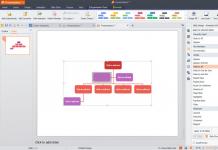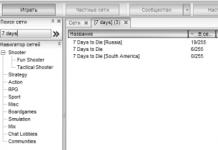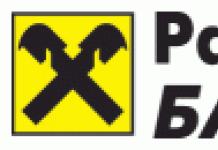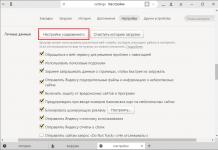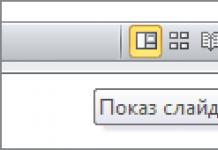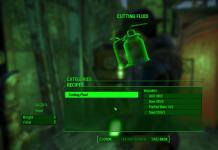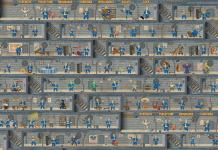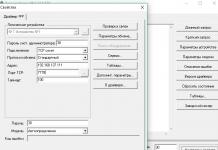Cleaning the context menu can be done manually through the registry, but this task is not trivial, since the entries are scattered in different places. In addition, it is not always easy to identify the appropriate registry key. For example, drivers are registered using the abbreviation “igfx”. The registry entries are scattered along the “HKEY_CLASSES_ROOT” branch in the “shell” or “shellex” folders, which contains a folder called “ContextMenuHandlers”, which also includes individual parameters.
Shortening the context menu through the registry utility
Manual processing of context menu lines will take a lot of time. It is much easier to use the ShellExView program. Using regedit, you should only change system options.
To detect items from third-party programs in ShellExView, sort the results by the “Company” parameter and find “Context Menu” in the “Type” column.
The free ShellExView utility will create a single list of all these registry lines. Even on a relatively new system, their number can exceed 250. To avoid getting lost in them, after starting the program, the entries should first be sorted. Things will go smoothly if you click on the “type” line at the top of the window. This way you will immediately see all possible registry entries related, for example, to the “Context Menu”. But be careful: along with them, the utility will display lines from Shell, which it is better not to touch.
You can also sort by the “Company” parameter. In this case, the results will be arranged in alphabetical order - records created by the system and designated as “Microsoft” can be easily distinguished from the rest. Here, for example, you can select the corresponding “igfxDTCM Module” and disable it by clicking on the red dot at the top of the menu bar. After this, the entry for the (virtually useless) Intel driver graphics options will disappear from the context menu. However, for the system to apply these settings, you must first log out and then log in again. Alternatively, you can use the Task Manager to disable “explorer.exe” and then call this service again.
Changing system context menu items

Most of the lines in the context menu are created by the system itself. Among them there are also options that are not used by anyone, which, however, you would not want to accidentally activate by mistakenly pressing them. You can't simply get rid of them using the ShellExView program - you will have to manually modify the registry.
A good example is the Send to option that Windows shows every time the user clicks on a file or folder. Don't forget that some sending options do not meet today's needs: the default is generally set to "Fax Recipient".
To remove this item from the menu, in Regedit, navigate to “HKEY_CLASSES_ROOT | AllFilesystemObjects | shellex | ContextMenuHandlers | SendTo". In the right window, double-click the “Default” option and before the long sequence of characters in curly braces, put a modest minus sign “–” to disable it. As always, you need to log out of Windows and log in again.
Many people love the Windows operating system, and many of us grew up using it. But some casual PC users - or those who have just recently switched to Windows - often get confused when looking for information about some of the simple things that control Microsoft's operating system. One such graphical element is called the "Windows context menu", or "right-click menu".
Today we'll tell you not only about this integral element of the Windows experience, but also about a third-party application that allows you to add custom elements to the context menu.
So what is the Windows context menu?
In simple terms, it is a pop-up menu that appears when you right-click in any navigation area of the screen (hence the name “right-click menu”). The context menu can be accessed in folders, the taskbar, web browsers, and other GUI areas. The context menu is not exclusive to Windows, so you may have seen it on other operating systems, including Mac OS X or Linux.
Speaking about the appearance of the Windows context menu, it looks almost the same everywhere - only the elements inside it differ. For example, the screenshot below shows the context menu that opens when you right-click on the desktop to, say, customize the desktop background image in the Personalization window.
Typically, the context menu contains elements such as “View”, “Sort”, “Copy”, “Paste”, “Rename”, “Properties”, etc. Some of the menu items are context based. In other words, in one area of the operating system the context menu may contain some items, and in another – different ones. For example, the menu that pops up when you right-click on the taskbar will contain completely different items compared to the menu you see in the screenshot below.

Here's another simple example of the context menu that appears when you right-click on a folder:

Now that you know what the context menu is in Windows and how it works, let's look at a convenient and free application that makes it easy to customize the menu.
A portable application that allows you to add custom items to the "right-click menu" in Windows 7, Windows 8 and Windows 8.1, it was developed by Sergey Tkachenko (WinAero) - a well-known developer who is the author of many useful tools, including. The application is very convenient in the sense that the entire process of adding items to the context menu requires a few clicks from the user.
To get started, launch the application. The Context Menu Tuner interface consists of two different panels - the left one contains a list of supported commands, and the right one consists of Windows Explorer areas. To add a command, you need to select one of them in the left panel, and then, after selecting your preferred element in the right panel, you need to click on the “Add” button. As you might guess, the “Delete” button is responsible for deleting added commands.
Additional features of the application allow you to add separators before and after certain menu items. In addition, there are a couple of additional options.

Another interesting feature of the app is its ability to add custom commands for specific file types. Once you open the “Select File Type” window, which you can access by clicking on the “Add -> Add to Specified File Type” button in the main application window, you will see an impressive number of supported file extensions. The list is very long, so to quickly find a specific file type, use the search bar.

The screenshot below shows my context menu, which I modified using Context Menu Tuner:

That's all. Now you know what the Windows context menu is and a simple solution to edit it.
Have a great day!
Very often, after installing various programs, unnecessary items are added to the context menu. For example, after installing any player, a new item for the right mouse button will definitely appear. That is, when we right-click on any file to open it in the specified program, an option to run using this program will be displayed.
Here, for example, is my context menu:
It's not quite small anymore.
With time items in the context menu It becomes a lot, in short it becomes clogged with unnecessary rubbish. In this lesson we will look at how they can be removed using standard system tools. Although many programs have already been created for these purposes.
The system registry stores all data about the operation of Windows programs and components. In this regard, careless handling of the registry and the slightest change can greatly affect the operation of the system, so be careful when making changes to it.
How to remove unnecessary items from the context menu?
Go to Start and click the Run button.

In the window that opens, enter the command Regedit and click OK.

Open the following folders:
HKEY_CLASSES_ROOT * shellexe ContextMenuHandlers

Having reached this path, we need to do the following. Right-click on the folder menu item that we want to delete. Let's say I want to remove shortcuts from the context menu - Notepad notepad, 7-Zip archiver. In the list that opens, select Delete.

Then we confirm the deletion.

We restart the computer and look at the result - these items are no longer there. This is how to remove unnecessary items from the context menu.
Useful video:
STOP! Read similar articles - learn new things:
Comments:
How to remove "CUT"?
That's it, thanks)) I found a solution in CCleaner (my version is 5.06). If anyone needs it: in the program, open Tools/Startup/top "context menu" tab. You can remove unnecessary items from the list or temporarily disable them. It couldn’t be simpler!)))
In particular, Tru Image (from acronis) and Ultra ISO are in the menu, but they are not in this section of the registry. For example, like you have with Unlocker.
What if more programs are displayed in the menu, but there are none in ContextMenuHandlers? Where then to look for them?
Finally, thanks to your article, I saw where the items in the context menu are stored. Many thanks to the author for the training.
Thank you
Thank you! It worked for Win 8.1 too.
Huge gratitude! I have no words. Everything is clear and in accessible language.
The Explorer context menu is the menu that appears when you right-click (Right Mouse Button) on some object (file or folder) or simply on an empty space in a folder or Desktop. If your system is new, then the context menu will be relatively empty. Is it just something added from the video card drivers, for example like this:
but if the system has been installed for a long time, then there will be more such points. For example like this:

As you can see, over time, in addition to the standard menu items, more installed programs were added. On the one hand it is convenient. After all, you don’t need to launch a shortcut or search for a program, but you can directly perform actions right from the context menu. But on the other hand, over time there are a lot of such items and sometimes you even have to scroll up or down the context menu in search of the necessary items.
Therefore, sometimes you want to remove these items so as not to get in the way. After all, you don’t use all the points often.
So how remove item from context menu.
In order to remove a program item from the context menu (CM for short), you can use both standard methods of the Operating System itself, and using the programs themselves or specially designed ones.
The easiest way to remove it is to look in the settings of the program (which you want to remove) for the desired item. Usually it is located somewhere in Integrations or Loading/adding. For example, in order to remove the famous WinRAR item from KM, you need to uncheck the Shell integrations:

Other programs may also have similar settings.
It’s another matter when you haven’t found the necessary settings to delete or they don’t exist at all (this happens too). Then you can use the standard method of the systems itself, namely editing.
I warn you right away that before starting work it would be better to play it safe and make a backup copy of the registry.
So, let's launch the registry and go to the branch
HKEY_CLASSES_ROOT/*/shellexe/ContextMenuHandlers

and we see here these same items from the context menu.
Now right-click on the desired item (the item from the KM that you want to delete) and select Delete:

We agree with the following warning:

reboot and check. The item should disappear.
If you haven't missed it, check out the thread.
HKEY_CLASSES_ROOT\AllFileSystemObjects\ShellEx\ContextMenuHandlers
and do the same.
On a note:
If you want to delete an item specifically from KM -> Create

then you need to know the type of file () that is being created. For example, for Microsoft Office Access the file extension is .accdb, which means you need to look for it in the registry branch HKEY_CLASSES_ROOT, and then delete the ShellNew subkey there

If you want to remove from KM those items that appear when you RMB on folders, then you need to look at the branches:
HKEY_CLASSES_ROOT\Directory\shell
HKEY_CLASSES_ROOT\Directory\shellex\ContextMenuHandlers
HKEY_CLASSES_ROOT\Folder\shell
HKEY_CLASSES_ROOT\Folder\shellex\ContextMenuHandlers

For the item "Open with..." the thread answers
HKEY_CLASSES_ROOT\*\OpenWithList
For KM Logical drives branches:
HKEY_CLASSES_ROOT\Drive\shell
HKEY_CLASSES_ROOT\Drive\shellex\ContextMenuHandlers

You can also delete items using special programs. For example using ShellExView

Its principle is simple: select the desired item and click on the red circle at the top of the program. The main thing here is that Type was Context menu

Now a little about how create your own item in the context menu.
The fact is that adding such an item for folders or specific files, as well as in an “empty” space using the registry will not work. You can only assign it to when it opens with RMB on the Desktop. Therefore, I recommend reading the article and taking advantage of what is described there.
Well, or use another utility - Ultimate Windows Context Menu Customizer() which has a bunch of features, but in English. And there we only need to select the item and delete it:

If anyone is interested in more details and can’t figure it out, write in the comments and I’ll help. There, in the left column you need to select an item (computer, folder, files, etc.) where the context menu is called up, and to the right, select what to delete and click the Remove Item button at the bottom. If you are fluent in English, you will understand.
You can guess how to add your program to KM -> Create if you read the entire article carefully, namely about deleting one of this items. You just need to create a subsection on the contrary and write for the desired extension.
In general, the article turned out to be a little chaotic and more about removing it from the context menu, because... I think this is more relevant, and there is an article about adding. Therefore, if anything is not clear, write in the comments. Let's figure it out.
Every Windows OS user knows that, regardless of the program, with the right mouse button you can call up an additional, so-called context menu, which contains a set of special commands and links. Let's try to figure out why it is needed and how to work with it correctly.
What is the Windows context menu
Speaking about the context menu of “operating systems” of the Windows family, I would immediately like to note the fact that it is not some kind of exclusive development of Microsoft Corporation. Mac OS X or Linux also has such an element.
In general, if you understand what a context menu is, it can be characterized as an additional set of commands for quick access to some functions, say, without calling a specific application or control.

For example, everyone knows that the context menu always contains the “Open with...” command, after which a list of the most suitable applications for working with the file is displayed. You understand how much more convenient it is to open a file here than to call up the program, and then go to the “File” menu and use the “Open” line or the Ctrl + O key combination.
In addition, in addition to commands, there is also a set of special tools with which you can learn many things. But more on that later.
Type and organization of the context menu
Let's now look at how the Windows 7 context menu is organized. Probably everyone has noticed that the menu itself has special separators in the form of thin horizontal lines. The meaning of their use is to distinguish between similar actions or commands belonging to the same program.
Here it is worth paying attention to the fact that the context menu in a so-called “clean” system, immediately after installation, may be very different from what the user will see after installing additional programs and utilities. This is due to the fact that many installation packages integrate quick access commands to some of their main functions directly into this menu during the installation process.

Most of all, this applies to anti-virus software, media players, programs for working with disk images, archivers, etc. In principle, the user can add his own items to ensure ease of use.
Additional menu on the Desktop and in program windows
Surely, every user has noticed that the context menu in different programs or on the same desktop differs in the list of items and commands. It `s naturally. For example, if you call up the menu on the desktop, it becomes clear that the “Open” line used for folders and files is not needed there. It’s another matter when the mouse button is clicked on a shortcut or saved file located exactly on the desktop.

As is already clear, in different programs the context menu may also contain different items. In this case, everything depends on the specifics of the application. Compare at least the usual Explorer and the Word text editor. But for now we will talk about the “native” Windows OS commands.
Main context menu items
Drop-down menus are present almost everywhere, even in the main Start menu. In any of them you can see some points marked with arrows. This is done to show that the clause itself contains additional subclauses.

As usual, for files and folders, at the very top there is always an “Open” command, highlighted in bold. When you click on this line in relation to files, they will be opened in some program. You need to know that selection occurs only if the application itself sets the file association with this particular program. Otherwise, using this command will only result in the system prompting you to review and select the most suitable application. If several programs are associated with a file, you can use the line “Open with...”, which will contain a list of programs that work with the extension of the file you are looking for.
It goes without saying that the context menu of the same Explorer contains commands such as “Copy”, “Delete”, “Cut”, “Paste”, “Send”, “Rename”, “Create a shortcut”, etc. Even a child knows this. On the other hand, there is also a “Properties” line, the use of which provides the user with complete information about the object being used.
So, for example, when calling such a command by clicking on the computer icon on the desktop, you can get general information about the main parameters of the computer system and the installed operating system. For the desktop, the context menu mainly provides only the use of settings and options for synchronizing folders with shared attributes.
Some menus also provide tools for administering or inspecting selected items.
Using additional context menu commands
Now let's talk about some additional commands. If you give an example of an installed antivirus, you will notice that the context menu will always contain lines like “Scan” or “Scan with...”. Agree, it’s very convenient.

The same applies to archivers, because you can add a file (folder) to an archive or extract it from there with one click.
Many media players behave this way, integrating their own commands into the system's context menu. Most often, items for adding to a playlist or playing (video and audio) appear here for multimedia files, and for graphics this is the viewing command. In general, it all depends on which program integrates its own command lines into the menu, and what objects are associated with it.
Adding and removing commands in the system registry
So we got to the solution to the problem - how to add your own items to the context menu. There are several ways to do this. In this case, we can offer at least three options. Two of them relate to editing the system registry, and one concerns the use of specialized utilities.
You can use adding keys in the system registry, but if you don’t know which keys and their values are responsible for a particular process, you can waste a lot of time, achieve nothing in the end, and bring the system to a state of complete inoperability.
Therefore, let's consider the simplest way to work with the registry. First, in the Run menu, use the regedit editor access command. Here you need to go to the HKEY_CLASSES_ROOT section, find AllFilesystemObjects, then shellex and finally ContextMenuHandlers.

In the last section, select an additional menu by right-clicking and execute the command to create a new object and key “New” and “Key”, respectively. Now you need to enter a name for the newly created key, which will be displayed in the context menu, after which we select the “Change” command and in the overview indicate the location of the program or application that will be responsible for the new action. We confirm the choice and reboot the system.
Removing keys in this section will cause the corresponding command from the menu to disappear. But if you don’t know which key is responsible for what, it’s better not to change the standard configuration.
Using the Context Menu Tuner
However, as practice shows, no one really wants to rummage through the registry (you never know what can happen). Therefore, we can recommend special utilities for adding and removing items to the OS context menu.

One of the simplest, but very functional, is a utility called Context Menu Tuner. It will help you quickly change the menu beyond recognition. Everything is simple here. The main window includes two panels. On the left are commands, on the right are folders and basic parameters. As is already clear, there is nothing easier than selecting the desired command and using the button to add it, say, to the desktop menu. Removal is done in reverse.
It is worth noting some additional options. First, you can select a file extension, and only then associate the corresponding command and program with it.
Changing the context menu access button
In the standard version, the default context menu button is the right mouse button. It’s very easy to swap the buttons and call up the context menu with a left click. To do this, you need to go to the mouse settings in the Control Panel and make the necessary manipulations. That's all.




